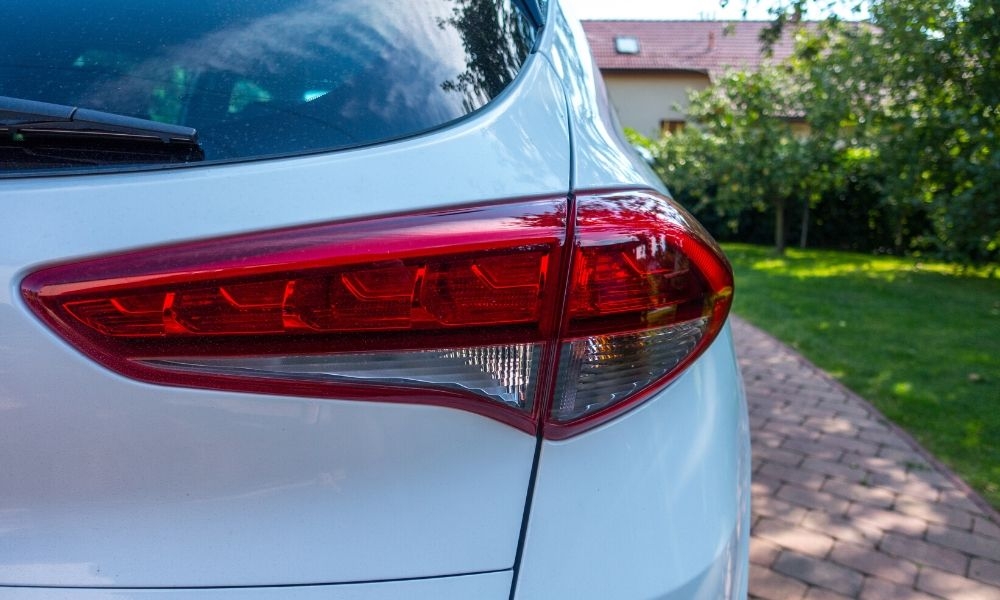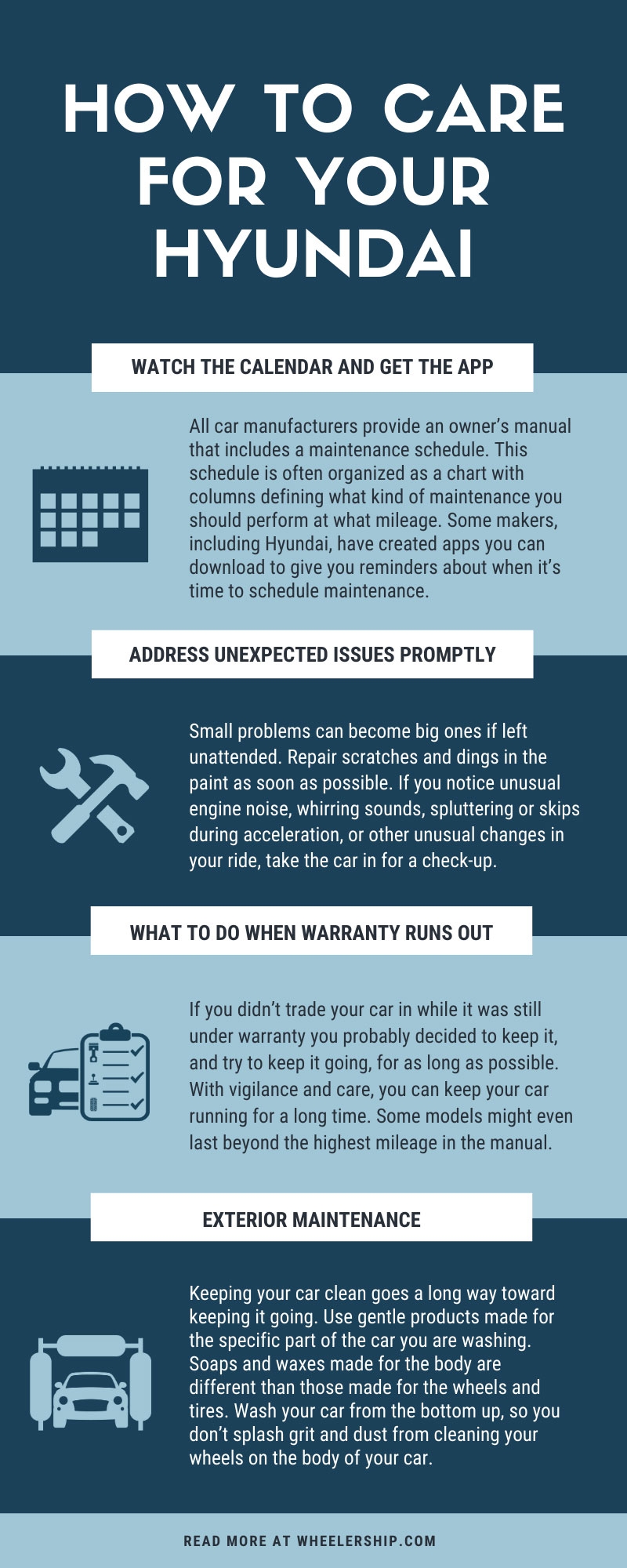
Hyundai made waves when it first introduced a 10-year, 100,000-mile powertrain warranty. For 2020, the brand has added a 3-year or 36,000-mile free maintenance package that provides complimentary oil changes and tire rotations on the ordinary factory-scheduled timeline. On top of that, Hyundai has something it calls an Assurance Car Care plan. This plan provides checks and maintenance and an assurance that trained technicians are using genuine Hyundai parts when servicing the cars. Even with these maintenance deals, as a car owner, you should learn how to care for your Hyundai.
Watch the Calendar and Get the App
All car manufacturers provide an owner’s manual that includes a maintenance schedule. This schedule, often organized as a chart with columns defining what kind of maintenance you should perform at what mileage, will define whether the manufacturer recommends maintenance or says that your car requires it. Some makers, including Hyundai, have created apps you can download to give you reminders about when it’s time to schedule maintenance, as well as quick methods to make service appointments and even connect you to roadside assistance if that’s in your maintenance package.
Address Unexpected Issues Promptly
Small problems can become big ones if left unattended. Repair scratches and dings in the paint as soon as possible. If you notice unusual engine noise, whirring sounds, spluttering or skips during acceleration, or other unusual changes in your ride, take the car in for a check-up. Describe the problem and the sounds. Take advantage of your maintenance plan if it offers free inspections by trained or certified technicians. Even new cars can have glitches or faulty parts that should be examined and, if necessary, replaced.
What to Do When the Warranty Runs Out
If you didn’t trade your car in while it was still under warranty, you probably decided to keep it (and keep it going) for as long as possible. With vigilance and care, you can keep your car running for a long time. Some brands might even last beyond the highest mileage in the manual. But this will most likely only happen if you carefully, and regularly, inspect and service all the parts of your car.
Exterior Maintenance
Keeping your car clean goes a long way toward keeping it going. Use gentle products made for the specific part of the car you are washing. Soaps and waxes made for the body are different than those made for the wheels and tires. Wash your car from the bottom up, so you don’t splash grit and dust from cleaning your wheels on the body of your car. Those little bits of sand and gravel you spray off your wheels can scratch your paint.
Use glass cleaner for windows and mirrors, and microfiber cloths that won’t scratch and won’t leave bits of lint all over your car’s glass. Don’t neglect the underside of your car: if you live in an area where winter weather makes for lots of salt on the roads, the corrosive effect can eat at your car’s undercarriage.
Regularly inspect your wheels and tires. This means looking for dents, dings, or hairline cracks in your rims. Damaged wheels can be dangerous. Visit your trusted tire and auto repair shop to determine if your rims are holding up ok, or if one too many contacts with curbs and potholes makes wheel replacement something you should consider. Your 2013 Hyundai Elantra rims will have seen a lot of service by now. If your car has been involved in a collision, it is especially important to check for wheel damage.
Rotate your tires according to the schedule in your owner's manual. For example, if the manual says to rotate tires every 7,000 miles, keep doing that. A good rule of thumb is to rotate your tires each time you get your oil changed. Check your tires for tread wear. Tire shops will measure how much tread you have left and let you know when replacement is in order. Take a look at your tires regularly to pick out little bits of gravel or debris that might be stuck in the treads. Look for splitting and cracks in the rubber; these could portend a blowout. If you’re not sure what you’re looking for, take your car to a shop you trust to have them look at how your tires are doing.
When you get your tires rotated, get your brakes inspected as well. Worn pads or rotors create hazards, and if you’ve noticed squealing, grinding, or a decline in brake performance, get that fixed right away. Check to see if you should flush and replace brake fluid.
Change your wiper blades every six months or so, or as soon as you notice they aren’t clearing your windshield as well as they should during rain or snow. Clean your headlights, and if they’ve begun to yellow, investigate one of those special products that can revive the plastic of your headlights. This improves the cosmetic appearance of your car but also may help brighten the illumination your headlights provide on dark roads.
Under the Hood and Inside the Cabin
Make sure you keep up with oil changes. Also, determine if you should change the oil filter each time you get an oil change. Inspect the air filter and change it when it gets too dirty. Don’t neglect the cabin filter to keep allergens, dust, bugs, and dirt from coming into the passenger cabin when you turn on the heat, air conditioning, or defroster.
Regularly check hoses and belts for wear and replace them if they are torn, frayed, or worn. Unfortunately, spark plugs don't last forever. Even if you had them replaced at 60,000 miles or so, you might need to replace them again.
In addition to oil, your car uses several other types of fluids. Transmission fluid and coolant might need topping off, or flushing and replacement. Check your windshield cleaning fluid and top it off during seasons of heavy use.
These are all common ways to maintain your car; they should help remind you of how to care for your Hyundai. Different makes may require different types of maintenance, especially as control systems become more complex and carmakers add more computerized elements. Your best strategy is to find an auto shop you trust that uses OEM or certified aftermarket parts that are approved for use in your car.

